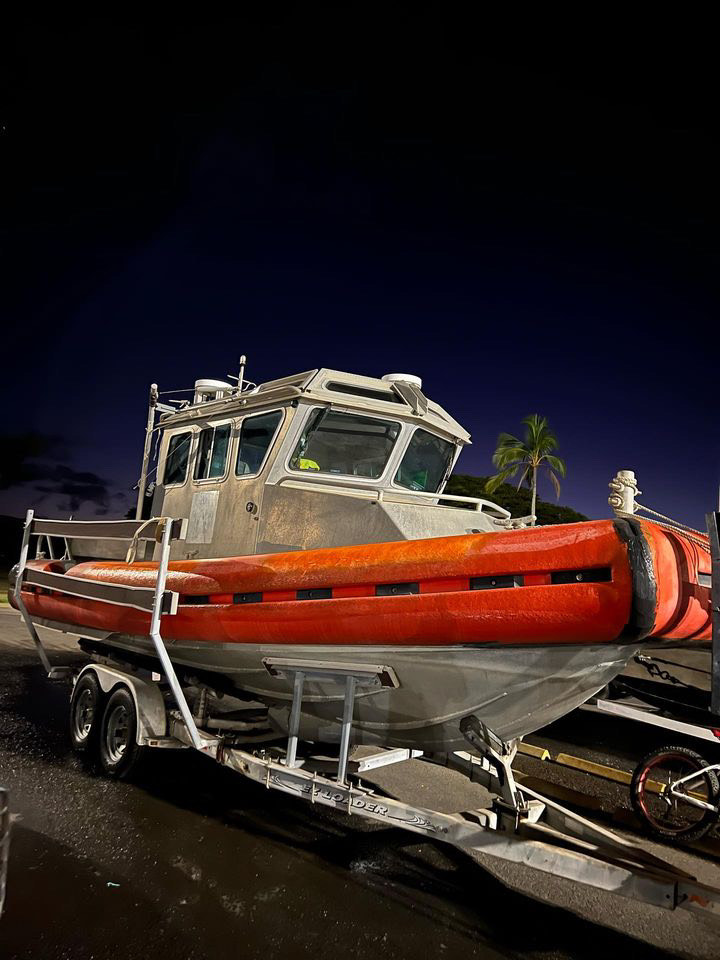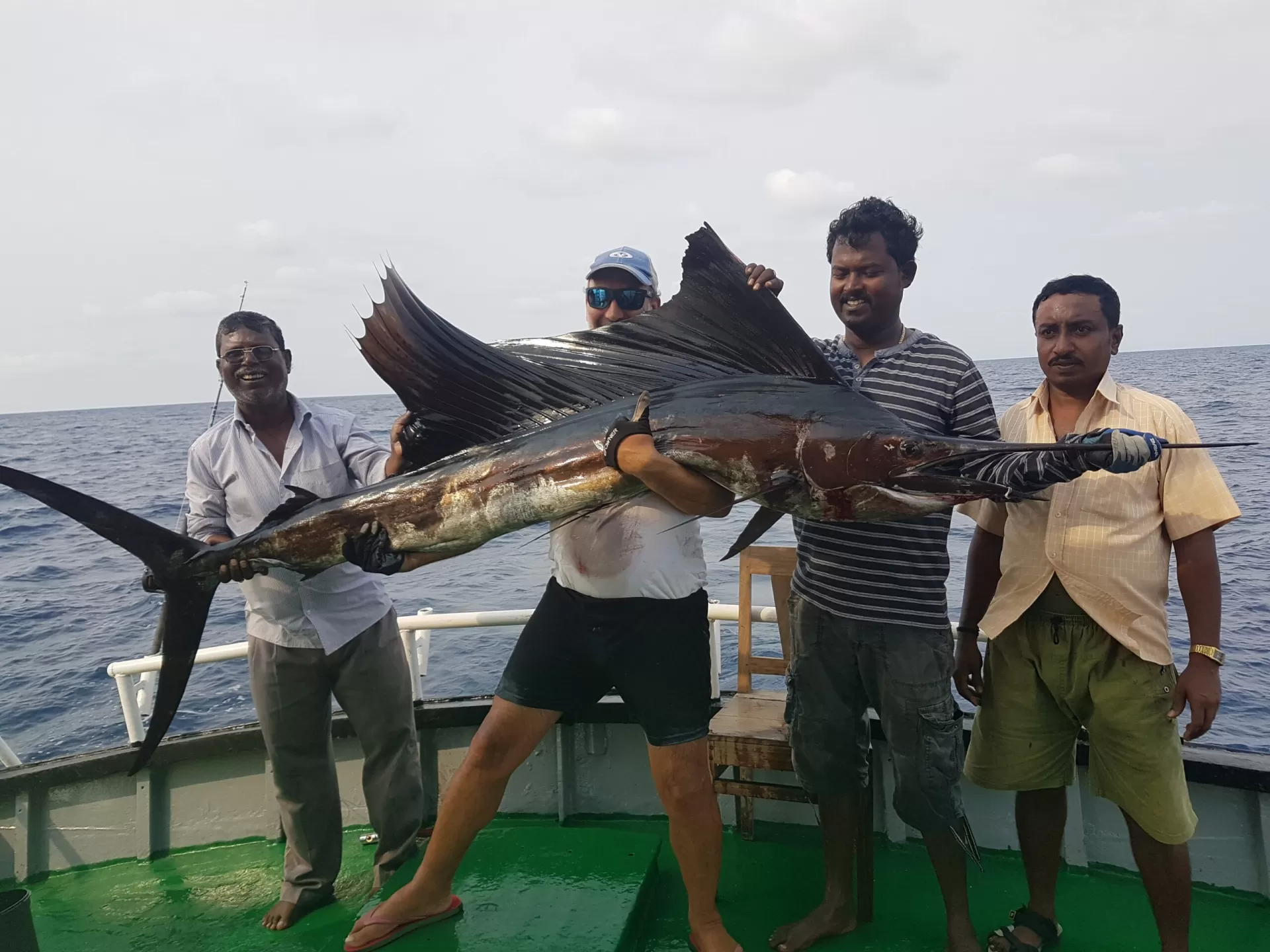Live Bait Bottom Fishing
Deep Sea, Nearshore Fishing in Honolulu
Honolulu's Ultimate Sportfishing
Inshore, Deep Sea, Eco Tour in Santa Catalina
Offshore Camp Adventure 4 Days
Inshore, Deep Sea, Nearshore in Wandoor
Big Game Fishing In Andaman
Inshore, Deep Sea, Snorkeling in Santa Catalina
Coiba Fishing Inshore
Inshore, Deep Sea, Nearshore in Sri Vijaya Puram
Half Day Game Fishing In Andaman
Inshore, Nearshore, Flats in Biloxi
Fishing Biloxi And Barrier Islands
Eco Tour, Boat Cruise, Dolphin Watching in Port Isabel
South Padre Island Dolphin Tour
Inshore, Jetty, Flats in Port Isabel
South Padre Island Fishing 4 Hrs
SPI Early Season Teal
We started Captain Experiences to make it easy to book fishing and hunting guides around the world. With over 2,000 Damn Good Guides, our platform makes finding and booking a trip seamless. Head here to check out our trips.
Trevally fish, belonging to the Carangidae family, are a group of marine species known for their distinctive features and behaviors, are a popular target for anglers across the globe. From the formidable Giant Trevally, admired for its size and strength, to the vibrant Bluefin Trevally, renowned for its striking coloration, each species offers unique characteristics and adaptations that allow them to thrive in their ecosystem.
Common Traits of Trevally

While Trevally species vary in size and color, they share some common traits. Typically, they have a compressed, oval body shape and are known for their agility and speed. Sizes can range from moderate to quite large, making them a formidable presence in their habitats. Found in both inshore and offshore waters, Trevally are known for their predatory behavior, often hunting in schools.
Types of Trevally
1. Giant Trevally
The Giant Trevally, found in the Indo-Pacific region, is a large fish commonly targeted by sport fishers. Its body is predominantly silver, occasionally marked with dark spots. As an apex predator, it has a varied diet that includes crustaceans, smaller fish, and cephalopods. The Giant Trevally plays a crucial role in its marine ecosystem, contributing to the ecological balance by controlling populations of its prey.
2. Bluefin Trevally
The Bluefin Trevally, characterized by its blue fins and metallic blue body, inhabits tropical waters and is commonly found around coral reefs. Its diet consists of small fish and invertebrates, making it an important species in maintaining reef fish populations. The Bluefin Trevally's interaction with its habitat underlines its role in the ecological dynamics of coral ecosystems.
3. Golden Trevally
Inhabiting shallow, sandy regions of the Indo-Pacific, the Golden Trevally, particularly noticeable in its juvenile stage with black bands, feeds on small fish and benthic organisms. This species contributes to the ecological balance of its shallow water ecosystems, playing a role in the food web and helping to sustain the diversity of marine life in these areas.
4. Black Trevally
The Black Trevally, known for its dark coloration, is typically found in open waters. This species has a diet that consists mainly of small fish and squid. Its role in the marine food chain, particularly in deeper ocean realms, is significant, contributing to the diversity and ecological balance of marine life in these areas.
5. Bigeye Trevally
Recognizable by its large eyes and silver body, the Bigeye Trevally is commonly seen in schools around reefs and lagoons. It feeds on small fishes, crustaceans, and cephalopods. The schooling behavior of the Bigeye Trevally is important for the ecosystem, as it helps control the population of smaller reef organisms and maintains ecological stability.
6. Yellowspotted Trevally
The Yellowspotted Trevally, found in tropical and subtropical waters, is distinguished by yellow spots and a sleek body. It primarily feeds on small fish and invertebrates. This species is active in coral reef and lagoon ecosystems, contributing to the balance of marine environments by predating on various smaller organisms.
7. Shadow Trevally
The Shadow Trevally, which has a subtle coloration, resides mainly in offshore waters. It has a diet that includes small fishes and crustaceans. The Shadow Trevally's presence in open ocean ecosystems plays a role in the complex food webs, contributing to the diversity of marine life in these vast aquatic environments.
Book Your Next Trevally Fishing Trip
If you're looking for an exciting day on the water, fishing for Trevally is the perfect target. Find and book your next Trevally trip with Captain Experiences today. We offer unmatched access to the best local Trevally fishing guides and back it all up with some of the best customer service in the industry.
Jake Lane
Updated on January 10, 2025

June 3, 2021

May 13, 2024

November 15, 2023

June 22, 2022

June 28, 2023
Related Articles
February 28, 2022
June 26, 2023
December 1, 2022
Featured Locations
- Fishing Charters Near Me
- Austin Fishing Guides
- Biloxi Fishing Charters
- Bradenton Fishing Charters
- Cabo San Lucas Fishing Charters
- Cancun Fishing Charters
- Cape Coral Fishing Charters
- Charleston Fishing Charters
- Clearwater Fishing Charters
- Corpus Christi Fishing Charters
- Crystal River Fishing Charters
- Dauphin Island Fishing Charters
- Daytona Beach Fishing Charters
- Destin Fishing Charters
- Fort Lauderdale Fishing Charters
- Fort Myers Fishing Charters
- Fort Walton Beach Fishing Charters
- Galveston Fishing Charters
- Gulf Shores Fishing Charters
- Hatteras Fishing Charters
- Hilton Head Fishing Charters
- Islamorada Fishing Charters
- Jacksonville Fishing Charters
- Jupiter Fishing Charters
- Key Largo Fishing Charters
- Key West Fishing Charters
- Kona Fishing Charters
- Lakeside Marblehead Fishing Charters
- Marathon Fishing Charters
- Marco Island Fishing Charters
- Miami Fishing Charters
- Montauk Fishing Charters
- Morehead City Fishing Charters
- Naples Fishing Charters
- New Orleans Fishing Charters
- New Smyrna Beach Fishing Charters
- Ocean City Fishing Charters
- Orange Beach Fishing Charters
- Panama City Beach Fishing Charters
- Pensacola Fishing Charters
- Pompano Beach Fishing Charters
- Port Aransas Fishing Charters
- Port Orange Fishing Charters
- Rockport Fishing Charters
- San Diego Fishing Charters
- San Juan Fishing Charters
- Sarasota Fishing Charters
- South Padre Island Fishing Charters
- St. Augustine Fishing Charters
- St. Petersburg Fishing Charters
- Tampa Fishing Charters
- Tarpon Springs Fishing Charters
- Venice Fishing Charters
- Virginia Beach Fishing Charters
- West Palm Beach Fishing Charters
- Wilmington Fishing Charters
- Wrightsville Beach Fishing Charters
































